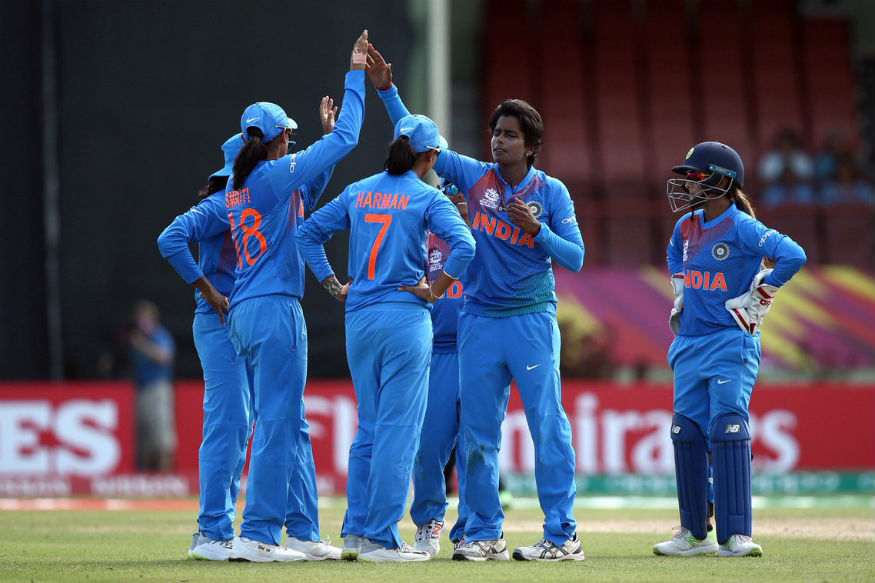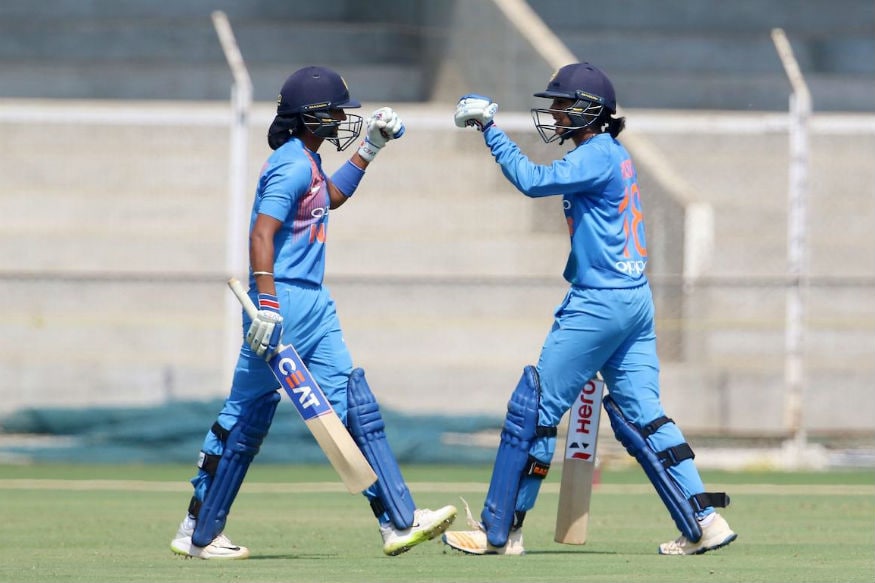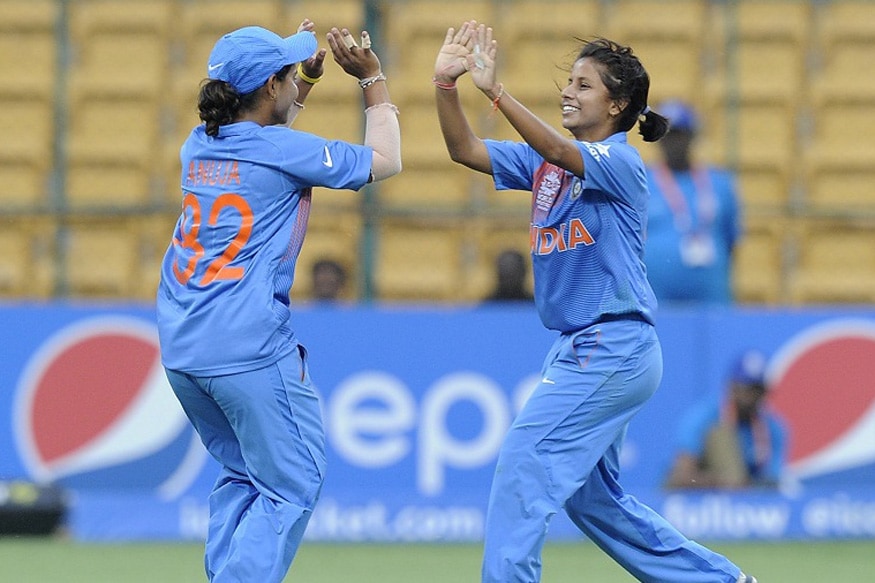
(Image: ICC)
Loading...
Bestowed with superstars but desperately lacking attention, this facet of cricket was awaiting its breakthrough moment. The moment that would change the way the women’s team would be viewed henceforth.
After a thumping performance in the World Cup in 2017, which was followed by another respectable outing in the WT20 in Windies last year, the changing perceptions towards the Women in Blue is hard to miss.
Television ratings when the Mandhanas and Harmanpreets play are at an all-time high and the early-morning matches are religiously followed. Debates cropped up when the Powar-Harmanpreet-Mithali saga broke out and the side no longer is known by the heroics of a select few.
However, instead of basking in this new-found popularity, the onus is on the unit to seize their chances and the new-found fame. In order to ensure that their past efforts are effectively utilized, the momentum that has been built up should be carried further.
Unless consistent results are produced, the women’s team risks entering the shadows once again, emerging from which will be even tougher the next time around. Hence the performances of the side in the next year leading up to the T20 World Cup in Australia will be crucial, with the results determining the route that Women’s cricket will take in India.
A one woman army - the batting trend that needs immediate correction
The primary issue plaguing the Indian team in T20s is the inability of a powerful batting line-up to rise to the occasion as a unit. If it was Harmanpreet’s heroics that rescued India in the tournament opener against New Zealand in the event after India was looking at a chaseable target, the next two games against Pakistan and Ireland were defined by the sedate knocks by Mithali Raj.
Though Smriti Mandhana and the skipper Harmanpreet got together to help India over the line against Australia, the inability of the batters as a whole to contribute did remain a worry; one that came to haunt the team in the semi-finals against England.
 (image: BCCI/Women)
(image: BCCI/Women)The recent T20I series against the White Ferns further established the theory. Sans Mandhana’s consistent run and handy contributions from youngster Jemimah Rodrigues, the women with the willow were unable to leave their mark. Struggling against genuine pace and swing, the team was further undone by a batting order that failed to instill fear.
Pushing Taniya Bhatia, who incidentally was asked to open in the first few games of the World T20, to number 9 in the three T20Is, throws open a plethora of questions. Though the keeper is yet to set the stage on fire, she has the potential to turn the game on its head, as was witnessed in the series against Sri Lanka before the world event in Windies.
How are Deepti Sharma, with a batting average of 13.90, Arundhati Reddy - batting average 3.50 - and Mansi Joshi, who has accumulated only three runs in her T20I career thus far, better batters than Bhatiya and why were they consistently pushed ahead of the Chandigarh player throughout the series?
If the team views her solely as a keeper, surely Bhatia would not have been asked to open in a prestigious tournament like the World Cup. How then has her skills diminished so vastly over three months, that she does not even warranty a batting slot above bowlers like Joshi and Reddy?
The inconsistent batting remains top-heavy and narrows down soon with Deepti batting at number 6 in the last T20I game against New Zealand after Raj. In the absence of the stalwart in the first two games, the batting looked even more wobbly, with none except Harmanpreet, Mandhana and Rodrigues capable of producing a scare.
Dayalan Hemalatha, listed as a top-order batter, has zero experience battling in tough conditions, while the rest of the unit is filled with bowlers who can bat and are hardly expected to produce quickfire cameos consistently.
The repeated ignorance of Raj in this inconsistent batting unit - India’s top 7 average only 24.26 since the World Cup in the format - too is questionable, and though the senior pro may announce her retirement from the format after the series against England, her services could have been utilized to bring in more solidity.
Is a 4-spin attack the way to go in every series?
The merits of always deploying the 4-spin attack that had carefully been harboured by previous coach Ramesh Powar can also be debated.
While the ploy to unleash Poonam Yadav, Sharma, Anuja Patil, Radha Yadav and Hemalatha worked on the slow and low grounds at Guyana when India played all their league stage games at the venue, it backfired in the semis at Antigua where the ball was coming on to the bat much quicker.
 Poonam Yadav. (Image credit: Getty Images)
Poonam Yadav. (Image credit: Getty Images)To be fair, the Indian batters had hardly put up a score worth defending - a target of 112 was all too easy - but the repeated short and wide bowling by the spinners did display the lack of experience in the line-up.
Even in New Zealand - where the tracks are anything but slow - the tweakers in general did struggle and though they did manage 10 wickets among them in three T20Is, the inability to stall the flow of runs or to create ripples was witnessed.
In contrast, the quicker bowlers, Reddy, and Joshi - brought in to the team for the second T20I - looked more formidable and with the next T20 Cup being held in Australia, the WV Raman-coached team would do well to harbour more speedsters which would make the bowling side more compact and dangerous.
“The present is the best time to create your tomorrow,” is an oft-quotes adage by Ken Poirot and it is imperative that the Indian women’s side take charge of their lacks right away so they can go all out Down Under next year.
First Published: February 11, 2019, 12:06 PM IST


 GET APP
GET APP
 Mithali Raj's T20 Future Remains Unclear
Mithali Raj's T20 Future Remains Unclear Mandhana’s Effort in Vain as NZ Sweep T20I Series
Mandhana’s Effort in Vain as NZ Sweep T20I Series Women's Exhibition Games Planned During IPL
Women's Exhibition Games Planned During IPL




